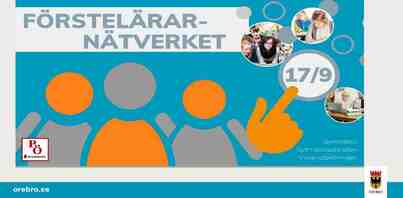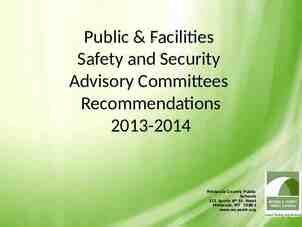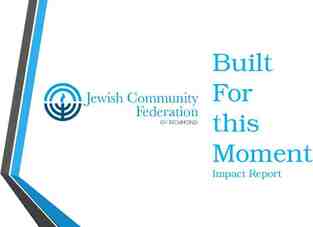Increasing Momentum in the Formation of State and Regional Monitoring
28 Slides1.59 MB
Increasing Momentum in the Formation of State and Regional Monitoring Councils Linda Green, co-chair, Collaboration and Outreach Workgroup, National Water Quality Monitoring Council Presentation to the Advisory Committee on Water Information, May 15, 2001
Council Mission “Provide a national forum to coordinate consistent and scientifically defensible federal and state water quality monitoring methods and strategies.” Create a framework for collaboration and comparability among programs as a goal necessary to the development of a national monitoring strategy.
Collaboration and Outreach Workgroup “To support the creation and building of partnerships which foster collaboration among the many elements of the water monitoring community.”
Collaboration and Outreach Workgroup Work Plan Tasks: Support the development of state and regional councils Organize the 3rd National Water Quality Monitoring Conf.
Support the Development of State and Regional Councils Who’s out there and what are they doing? Conduct Assessment of Councils via EPA monitoring Coordinators via ACWI participants Summarize Results Invite reps to come to NWQMC meetings Targeted Workshops at NWQMC conferences
Support the Development of State and Regional Councils Council members Emery Cleaves and Robert Ward, NWQMC ambassadors extraordinaire, have made presentations about state/regional councils to groups that are forming .
Assessment of State, Interstate, or Regional Watershed Monitoring Councils Council name, contact information: Sponsoring organization(s): General description of your membership : When was your Council created and why?: Charter, bylaws or other adopted written Council operating procedures? Meeting Schedule? Sub-committees?
Assessment of State, Interstate, or Regional Watershed Monitoring Councils Funding? Staff Support? Products or Publications? Special Projects/Significant Accomplishments? Networking via Web, list serve, document sharing? Special forum/workshop at 2002 Conference?
Common Council Themes Communication Coordination Collaborative Watershed Based Monitoring Document Monitoring Activities Efficient Use of Monitoring Resources Raise Public Awareness Inclusiveness
State/Regional Councils: Common Activities Network design and coordination (6) Data Inventory and management (includes GIS) (6) Annual Conferences (5) Field and analytical methods and QAQC (5) Data Interpretation or Reporting (2) Issues Based Groups (3) –there are a number of other watershed groups that focus on specific issues as well.
Common Concerns Funding/Institutional Support Time - more meetings Efficiency Capacity Building
Oklahoma’s Water Quality Monitoring Council J . D. Strong, Chairman Office of the Secretary of Environment
Oklahoma Water QualityMonitoring Council Why a Council? . . . Too many chefs in the kitchen!!! OCC ODA DEQ OSE ODWC Tribes USACE OWRB CorpComm USGS Numerous conflicts & inefficiencies resulting from disparate monitoring programs Secretary of Environment needed to step-up efforts to coordinate monitoring activities
Monitoring Council Quality Water oma O r g a n iz a t io n a l S t r u c t u r e O W Q M C A d v is o r y C o m m itte e S e c r e ta ry o f E n v ir o n m e n t p l u s 6 S t a t e M o n i t o r in g A g e n c i e s O k la h o m a W a te r Q u a l it y M o n it o r i n g C o u n c il M o n ito r in g P r o g r a m C o m m itte e E d u c a tio n & O u tr e a c h C o m m itte e R e s p o n s ib le f o r d e v e l o p i n g t h e o v e r a l l m o n it o r i n g f r a m e w o r k & s t r a t e g y f o r O k la h o m a . R e s p o n s ib l e f o r i m p r o v in g t h e p u b li c ' s a c c e s s t o , & k n o w l e d g e o f , W Q d a t a / i n f o r m a t io n . Q A /Q C & S a m p lin g D e s ig n C o m m itte e G IS & D a ta S to r a g e C o m m itte e R e s p o n s ib le f o r e s t a b li s h in g c o m m o n Q A / Q C p r o c e d u r e s a n d d e s ig n i n g e f f i c ie n t s a m p l in g p r o g r a m s . R e s p o n s ib le f o r e s t a b l is h in g a c le a r in g h o u s e f o r a ll W Q d a t a & i n f o r m a t i o n , a n d m a k i n g it m o r e a c c e s s ib le .
Oklahoma Water Quality Monitoring Council Council Membership An advisory body to the Secretary of Environment, the 25-member Council is made up of diverse groups involved and/ or interested in water monitoring in Oklahoma – 8 State environmental agencies – 5 Federal environmental agencies – 3 local government representatives – 2 Tribal environmental representatives – 2 environmental organization representatives – 2 academicians from State universities – 3 at-large members
Oklahoma Water QualityMonitoring Council Goals of the Council Develop and implement collaborative, watershedbased monitoring strategies Provide a forum for effective communication, cooperation, and collaboration among individuals and organizations involved in monitoring Document monitoring activities in Oklahoma using state of the art tools such as GI S-based mapping techniques Promote the use of quality assured procedures for sample collection, analytical methods, assessment, and data management
Lake Michigan Monitoring Coordination Council (LMMCC) Why? To foster cooperation and coordination among groups involved in all types of environmental monitoring activities. To develop a systematic and comparable approach to all aspects of data collection, management, and dissemination related to issues, policies, res. management in Lake Michigan Drainage basin.
LMMCC MEMBERSHIP 2 each from states of MI, IN,IL, Wi 7 from Federal Agencies 2 Tribal Authorities 2 Business, industry, consultants 1 Agriculture Local, volunteer monitoring groups Sea Grant/University-based Institutes Lake Michigan Lakewide Management Plan Forum Local Government/planning agencies Great Lakes Fisheries Commission
LMMCC GOALS Document monitoring activities, ID data gaps Contribute to developing monitoring framework Establish and maintain collaborative partnerships linking organizations and initiatives Encourage comparable, documentable monitoring Support linked info networks Provide guidance/assistance to improve awareness of monitoring
LMMCC Structure Secretariat support provided by Great Lakes Commission, funds administration Funded by US EPA Lake Michigan team Chaired by 2 members, for 2 years Topical Issue workgroups formed as needed Meet twice per year, conf calls
Funding provided through the US Geological Survey through the Water Resources Research Center, UMASS Amherst and US EPA Region 1
Why NERMC? Worn out and stretched too thin! Coordinate delivery of training and related services to volunteer watershed monitoring groups in New England Increase the level of expertise of volunteers and program coordinators Enhance sharing of data within watersheds and the region
Collaborators River Network Univ. of Mass. Water Watch Partnership Univ. of Maine Department of Public Affairs Univ. of New Hampshire Cooperative Extension and Freshwater Biology Group Univ. of Rhode Island Cooperative Extension Conn. Dept of Environ. Protection EPA- New England Region CSREES Regional Volunteer Monitoring Theme Team
Activities Production of a set of manuals, videos and training aides on 5 watershed assessment tools Creation of a regional training network by conducting a series of “train-the-trainers” workshop Institute an evaluation and planning process for volunteer monitoring programs Watershed Assessment Strategy Document
NERMC Watershed Assessment Tools Watershed Natural Resources Inventory Rapid and Intensive Habitat Assessments Benthic Macroinvertebrate Streamside Assessment Intensive Benthic Macroinvertebrate Assessment “Following the Flow”: On-site Non-point Source Pollution Evaluation
Opportunities: NWQMC and State/Regional Council Connections Working together (virtual Council) toward common goals – Networks, Methods, Data, Interpretation, Reporting and Outreach Active involvement at Council meetings and as members of Council Work Groups Important not to duplicate efforts with NWQMC activities and to share results between Councils
Role for ACWI Distribute Assessments Endorse Concept of State/Regional Councils

































